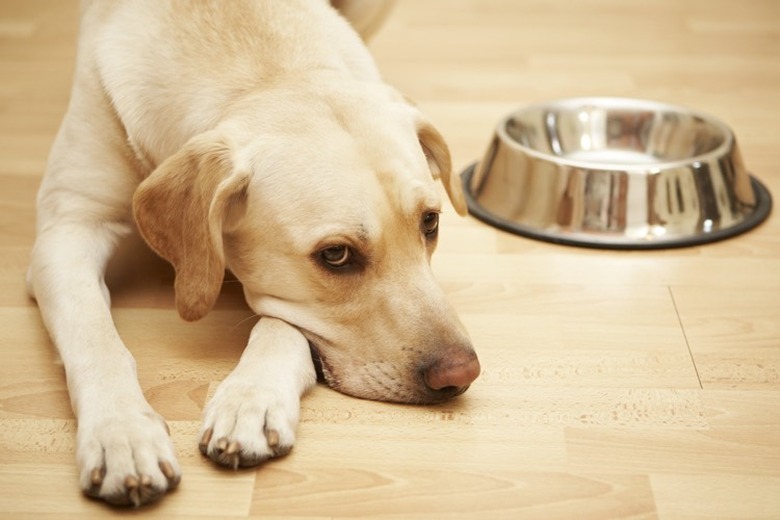Why Do Dogs Move Their Food Bowls?
Your dog could move his food bowl around for the same reason he buries his bones in the backyard (or in your laundry or under your pillow) — an instinct that goes back to his wild ancestors. Wolves often stash their food away from the pack so they can eat in peace. On the other hand, your dog could just want to communicate with you about his food or the placement of his bowl.
Some dogs have an instinct to hide food.
Some dogs have an instinct to hide food.
When your dog moves his bowl, he might be trying to stow his food somewhere he believes will be safe. It's not that he thinks you'll steal it, he's just following an instinct to eat without the risk of another dog trying to take his dinner. Even if he's your only puppy and he trusts you completely, the urge can still kick in. Some dogs indulge this same instinct by carrying kibble to other parts of their homes, where they eat or hide the food.
Your dog may move their bowel because they crave variety.
Your dog may move their bowel because they crave variety.
Sometimes your dog will move her food dish simply because she prefers it in a different location. She might dislike the way a metal bowl sounds on a tile floor, or she prefers to stand on carpet while she eats. Maybe she just wants to be close to you; if you feed her in the kitchen and then go into the living room to watch TV, she might nudge her bowl in your direction because she wants your company.
An empty dog bowel causes some dogs anxiety.
An empty dog bowel causes some dogs anxiety.
Dogs used to free-feeding often want food in their bowls constantly, whether they're hungry or not. Seeing the kibble can provide a sense of security; just like pups who hide their food, these guys and girls like knowing where their next meal is. After they finish dinner, they can become anxious seeing that empty bowl. Pushing and thumping the dish is a way to tell their person they want more food and they want it now. Dogs might also nudge or rock their water bowls to let their people know when they're thirsty.
How to train your dog to stop moving his or her food bowl.
How to train your dog to stop moving his or her food bowl.
To stop your dog from moving his bowl, you can try several different strategies. Sometimes confining him while he eats can do the trick. If he consistently pushes his dish to the same spot, try feeding him there. You can also experiment to see if he prefers a different type of bowl. If your dog is moving and hiding a bowl that still has food, it could be a sign you're over-feeding. Give him smaller portions, or establish regular meal times instead of free feeding. Also, placing his bowl on an elevated stand, available at most pet stores, can make it much harder for him to rearrange his eating area.
